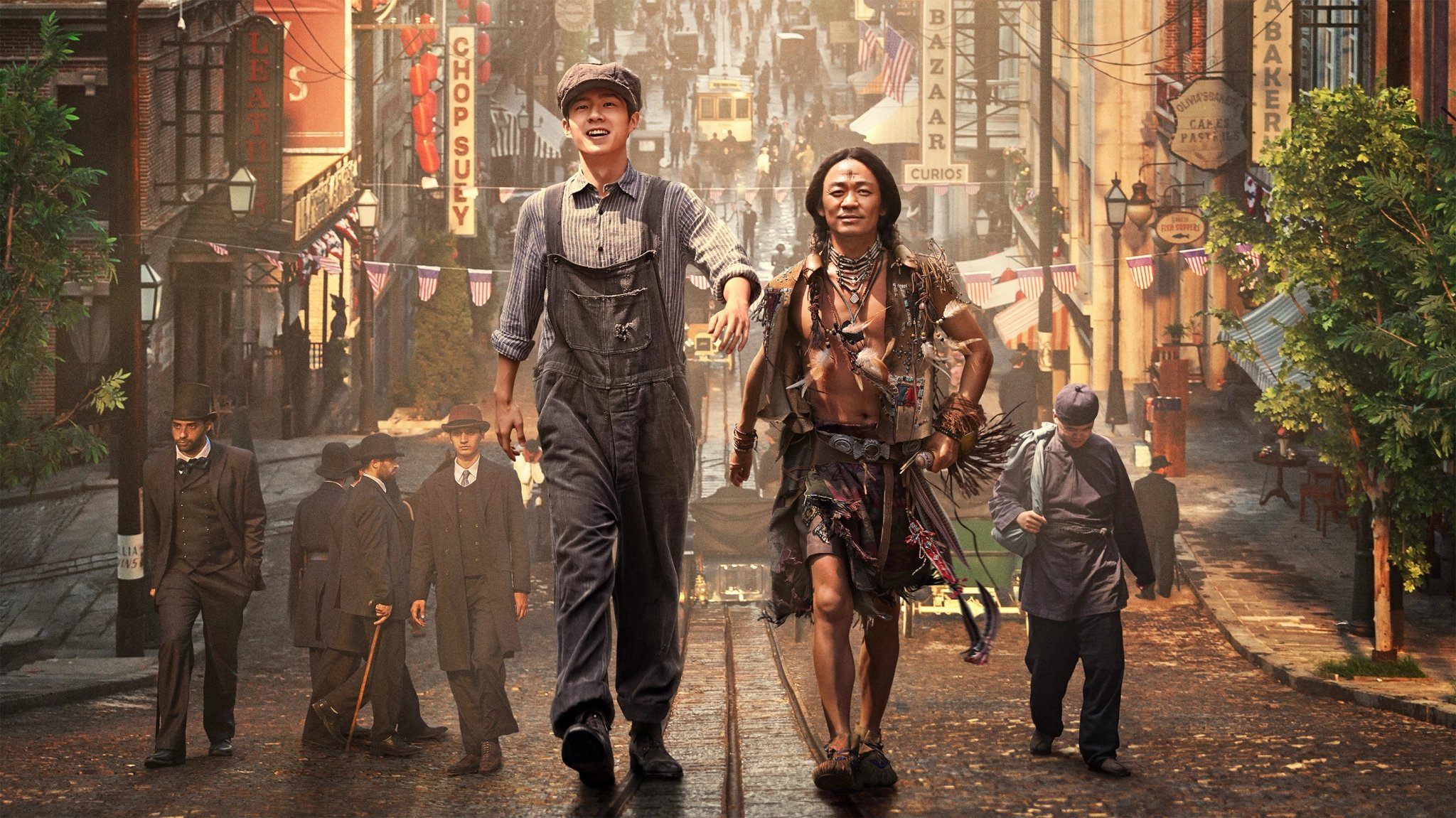Zeros and Ones is a regular series where we explore how technology and the internet impact everyday people’s lives in China and beyond. This month, we speak to HTC China President Alvin Wang Graylin about the future of extended reality and the future of the global metaverse.
The ‘information superhighway,’ the ‘world wide web,’ ‘cyberspace.’ As often happens with new groundbreaking technologies, the internet has had many monikers since it started.
If HTC China President Alvin Wang Graylin were to rename the much-talked-about metaverse, he would probably call it the “Betterverse.” To him, the current name is too ingrained in dystopian ideas like those permeating Neal Stephenson’s Snow Crash, the novel from 1992 that coined the term.
Almost 30 years ago, Stephenson’s cyberpunk story envisioned the metaverse as it is now, the virtual reality successor of the internet, a dimension where everyone has avatars of themselves. The plot, however, contemplates this virtual world as an escape from a hellish real world and includes the spread of a dreary computer virus with real-life effects.
Arguably, it’s almost impossible to write good sci-fi without a hint of dystopia. Graylin knows that, but he still thinks Stevenson shows a rational understanding of the dangers some technologies can present. Even so, he feels that a change of mindset is necessary to embrace the full potential of the metaverse.
“I love Neal. We had lunch [over the summer]. He’s a fantastic author with incredible insight,” Graylin says. “But I think the name metaverse makes people think of a sci-fi dystopia. What we need is to move on and think of a better digital world that enhances our physical world.”

Born in China and educated in the United States, Graylin has been studying extended reality (XR) technologies — the ones that combine virtual reality with the real world — since the early 1990s. His graduation thesis was on the disruption XR technologies would bring to the education system within the following decades. “I might have been off by about 20 or 30 years,” he laughs. “But I’m happy to see a lot of the things I predicted then starting to happen now.”
Besides HTC China, Graylin is also president of the Virtual Reality Venture Capital Alliance and vice chairman of the Industry of Virtual Reality Alliance. Back in the 1990s, when he put on a VR headset for the first time, he saw something beyond blocky characters in a low-poly world: the potential the technology has to interact with the most basic of human senses and enable personal growth based on perception learning.
“Our brain is designed to have full body learning and draw information by using multiple coordinated systems and perspectives,” he explains. “When looking at a screen, we use only a tiny portion of these systems to create a memory. But everything becomes much more vivid when you’re embodied.”

Naturally, the disruptive potential of XR exceeds the education realm and permeates almost every aspect of life. Graylin is a firm believer in the XR revolution, which is already taking place, and he thinks it will affect us more than the previous PC, web, and mobile revolutions.
“The internet gave us access to information from around the world, and mobile smartphones allowed us access to this information wherever we want. The XR interface will essentially transport us into this information,” he says.
He points out multiple benefits to this immersion. For one, when consuming information, our attention span, which he says is now as short as a goldfish’s memory thanks to the design of social platforms, will increase by roughly six times.
In online interpersonal communication, even when there is distance, the metaverse will create a sense of presence and genuine connection much higher than what we experience today with two-dimensional screens.
This is one of the most exciting factors of the new technology to Graylin. Before the pandemic, he spent around 70% of his time on business travel and conferences. He also splits his life between Beijing, where he’s based, and Seattle, where his family is. Unsurprisingly, with Covid, his travels dropped to about 30-40% of his time, but often that time is largely taken up by the wait in quarantine.
With the help of XR technologies, though, Graylin could utilize his time in quarantine to continue his work and life with no interruption without physically being there.

Still, to benefit from all this, we need to reach certain fidelity levels of the technology, or, in other words, increase VR’s capacity to reproduce the real world with high verisimilitude. Graylin is sure they will. He alludes to a fantastic future in which widespread brain interfaces will make distinguishing reality from virtual reality virtually impossible — no pun intended.
Is he excited? Scared?
“I’m cautiously optimistic,” he says. “With any technology, we’re always dealing with a two-edged sword, particularly when they have the potential for mass impact.”
With that in mind, Graylin and his team at HTC have been working with research institutions to understand how technology influences people’s behavior. They want to understand what causes addiction and the factors that might facilitate hate speech or brainwashing.
“We are trying to solve these problems on an international level. HTC has an open stance regarding technology, not asking for exclusivity, and working to create an interoperable metaverse. That, we feel, will benefit society in the long-term.”
As far as the ‘Chinaverse’ goes, Graylin thinks the Chinese system will remain relatively closed for the near future before opening up, allowing for interoperability with other systems. We can already see this happening with the crypto-less path the country is taking and the creation of the digital renminbi.
Still, such a scenario will likely speed up development and promote quicker acceptance. To Graylin, the Chinese metaverse will be an experiment from which other countries can learn.
“I believe China will be the first country to enable a nationwide metaverse. The infrastructure here is probably better than almost anywhere in the world. About 70% of the world’s 5G towers are in China. Essentially, anybody can already access these devices with ease. We also have a unified currency, and a unified ID system is being implemented across social networks,” Graylin says.
He points out that, in China, industry and the government see the metaverse as a way to establish global leadership. It’s almost as if the country is compensating for not being ready and missing the internet boom of the 1990s. Now, China’s 14th Five-Year Plan is focusing on innovation-driven growth, and governmental bodies are working with industry representatives to set protocols that local companies will quickly embrace.
“When all that happens, we will have a really interesting petri dish,” Graylin says. “A fully blooming metaverse where we can see behavior patterns and other learning outcomes that will be very helpful to other countries.”

Graylin also notes that confidence in metaverse and NFT technologies remains high in China while the hype seems to fade elsewhere. To him, this shows the maturity of the Chinese market.
“If you look at the Google trends charts for both terms, you’ll see that they have been dropping precipitously in most countries. But they’re still at the top in China. This shows a difference in how seriously we take these technologies,” he says.
He thinks each region of the world will have its own walled garden and progressively open up, creating a global, interoperable metaverse. Still, each will maintain its specific metaverse corner dedicated to local populations.
Now, the question is, when will all this happen?
Graylin believes the metaverse will take a little longer to become mainstream than the internet. Things are getting more complicated, after all. “There are two fundamental challenges to overcome. One is convincing people to get a headset device, and the other relates to creating 3D content, which is far more complex than 2D,” he says.
“The Metaverse that we have now is still not seamless; the tools are not there yet. It will probably take about 10 years to transform media, social media, and interpersonal relations. China will get there first — so maybe five or six years for it to happen here,” Graylin says. “Imagine what the internet was like 20 or 30 years ago. I think we’ll see the same levels of progress with the metaverse,” he adds.
Interested in all things metaverse? Click here to read more insightful coverage of the future of the internet.
Cover image via Depositphotos
























